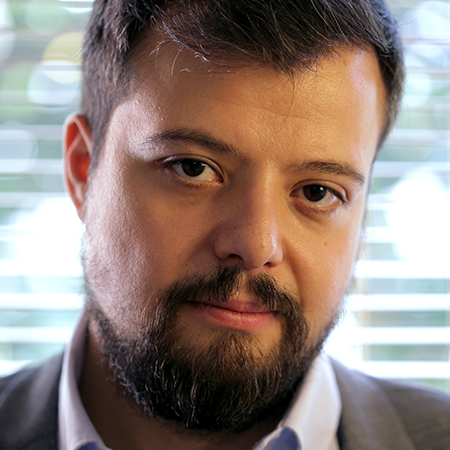Enterprises and communications service providers are investing heavily in network automation to ensure their networks can support the demands of a modern digital infrastructure. Today’s networks require management and remediation to be completed more rapidly than can be manually applied, regardless of the size of your organization.
This 6-part webinar series will help you understand how to automate and manage across your multivendor network with Red Hat® Ansible® Automation Platform.
We encourage you to attend each webinar to understand how automation can help improve your team’s efficiency, speed, and resiliency in network management.
Webinar 1: Ask me anything: Network automation
You have questions; we have answers.
Many of our customers use Red Hat® Ansible® Automation Platform to automate their networks, along with other aspects of their IT operation. Whether you’re an existing customer using this platform for network automation, expanding your Ansible Automation Platform solution into your network from another area like infrastructure, or new to Ansible Automation Platform for network automation, join us for answers to your most burning questions on network automation. We’ll include overview information, such as tips, news, and other information as we get started, but the main focus will be on your questions.
In this webinar, we’ll cover:
- A few pieces of overview information, such as tips, links to valuable technical resources, and news.
- Your network automation questions, so you’re better prepared to implement network automation.
Live Event Date: Tuesday, August 29, 2023 | 11 AM ET
Speakers: Dafné Mendoza and Sean Cavanaugh
Webinar 2: Ansible Certified Content Collections and Ansible validated content for networks
What if you could jump-start new automation projects with minimal effort and in less time? With Red Hat® Ansible® Automation Platform, you can. It includes more than 150 certified and validated content collections designed to provide you with the automation assets you need (roles, modules, plug-ins, playbooks, and more) across a range of IT domains, including network, cloud, security, edge, and more. You can use this content to create new automation solutions for the multivendor technologies you’ve implemented across your network and edge.
In this webinar, we’ll focus on network automation content and network-related security content, such as firewalls. This will help you understand what content is available to support your automation efforts, whether you’re new to network automation or already using this platform to manage your network. We’ll also talk about the benefits of Red Hat Certified Content and explain our new Ansible validated content.
In this webinar we’ll cover:
- An overview of what network automation content is available.
- The differences between certified content and validated content.
- Where to find this content in and a demo of automation hub.
- How to use automation hub to get a new automation project started.
Live Event Date: Tuesday, September 12, 2023 | 11 AM ET
Speakers: Massimo Ferrari and Emily Bock
Webinar 3: Zero trust security automation for networks
At Red Hat, our mission is to design, adopt, and promote the use of zero trust architectural patterns. This approach takes the place of implicit trust with the principle, "never trust, always verify." The last several years have seen a rapid increase in the number of devices across organizations’ networks that are decentralized and need improved security and management. This creates internal and external risks because much of what used to be housed in offices is now in employees’ homes and running on their personal networks. At the same time, domestic and international cyberattacks are increasingly common. With many disparate tools, devices, and processes, a zero trust framework is needed to help department leads and cybersecurity professionals manage different networking environments, coordinate, investigate and respond, and work toward unifying these tools, devices, and processes. Red Hat® Ansible® Automation Platform can help to stitch these tools and processes together through automation.
In this webinar we’ll cover:
- How organizations are moving from a model of implicit trust to, “never trust, always verify.”
- How the September 2024 deadline for the U.S. executive order regarding zero trust could influence your design architecture.
- How Ansible Automation Platform can help to pull together different security tools and processes through automation.
Live Event Date: Tuesday, September 26, 2023 | 11 AM ET
Speakers: Jamie Beck and Craig Brandt
Webinar 4: Automating network services for and from the cloud
As public cloud adoption accelerates, many practitioners question the role of network architects and engineers in the new hyperscaler world. However, as they begin to expand their public cloud strategy, it doesn’t take long for engineers from all facets of the organizational structure to understand how important network knowledge is, regardless of where network services are rendered. Whether it’s configuring Amazon Web Services (AWS) direct connections to their on-premise datacenter, advertising Border Gateway Protocol (BGP) networks to peers with the internet, configuring security groups and access lists across numerous virtual networks, or simply configuring load balancers, a network engineer brings essential skills.
In this webinar, we’ll explore some common use cases for network services for and from the cloud. We’ll additionally explore how you can use Red Hat® Ansible® Automation Platform to help automate these and abstract away complexities with individual public cloud platforms. While implementation of network services may be different from traditional network vendors, Ansible Automation Platform can help network engineers and system administrators measure twice and automate once.
In this webinar, we’ll cover:
- The critical role network engineers and architects play in implementing hybrid cloud solutions.
- Typical use cases for network automation for the cloud that can help you get started.
- How you and your company can benefit from automating network automation for and from the cloud.
Live Event Date: Tuesday, October 10, 2023 | 11 AM ET
Speakers: Sean Cavanaugh and Matthew Packer
Webinar 5: Network automation 101: Getting started with network automation
Networks are adapting to meet the next generation of needs as digital transformation accelerates to include better connectivity across remote locations, programmability of campus and datacenter networks, and hybrid cloud modernizations. As these transformations take place, networks become even more essential and increase in size and complexity. Manual processes and operations won’t be able to keep pace, so companies are increasing their network automation efforts to respond faster to business needs, increase efficiency, reduce unexpected downtime, control costs, and unburden valuable resources for more transformative work.
But where do you start and what technologies can provide you the most flexibility? Join this session to learn how Red Hat® Ansible® Automation Platform can help automate full network processes versus just a single facet of network operations.
In this webinar, you’ll discover:
- How to identify the best project for your initial efforts and how to scale automated NetOps.
- The unique benefits of this automation platform and the basics of how it works.
- How to implement automated network workflows, in a demonstration, followed by a Q and A session.
Event Date: Available on-demand
Speakers: Dafné Mendoza and Trishna Guha
Webinar 6: Use network automation to manage your multivendor networks
Because networks are growing in scope, complexity, and importance, you need a way to improve speed, efficiency, accuracy, and compliance across your network—all the way to the edge. Automation helps you meet these goals and unburdens you from repeated tasks that take time away from other priority network innovation needs. Now with event-driven automation, you can respond flexibly and automatically to changing conditions to make more time for innovation and work smarter.
Red Hat® Ansible® Automation Platform can help automate across a variety of networking solutions, including Cisco and other multivendor technology in traditional network and new edge implementations.
In this webinar, we’ll cover what’s possible when you automate the management of:
- Cisco networking devices for traditional network solutions, such as datacenters, local area networks (LANs), wide area networks (WANs), and more.
- Cisco Meraki devices for edge networking deployments.
- Integration with ServiceNow to allow closed loop management of tickets and add network facts into the ServiceNow configuration management database.
- Employing Event-Driven Ansible to automate responses in user-specified ways.
- Using GitOps for networks to provide a single source action that can be taken, so you can enforce network standards and configurations.
We’ll identify key things to know in each of these areas and take you through a demonstration. Following the webinar, we’ll answer your questions and also point you toward additional resources for further learning opportunities.
Event Date: Available on-demand
Speakers: Dafné Mendoza and Tony Dubiel









